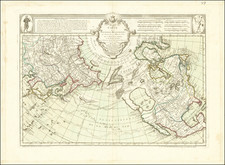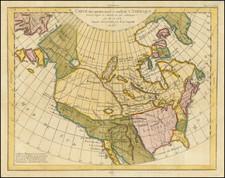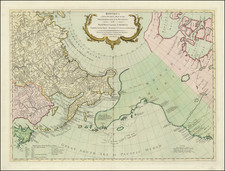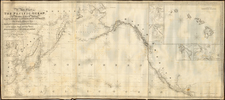William Healey Dall's Alaskan Explorations: A Comprehensive Chronicle
Scarce map of Alaska, extending from the Dixon Strait to the Behring Sea and north to Fort Selkirk, illustrating the explorations of William Healy Dall.
In the annals of scientific exploration, William Healey Dall (1845–1927) stands out as the "Dean of Alaskan Explorations." Dall's scientific career began in 1865 when he joined the Scientific Corps of the Alaskan Western Union Telegraph Expedition.
The Western Union Telegraph Expedition of 1865-1867, often referred to as the Russian-American Telegraph Expedition, embarked on an ambitious project: to probe the viability of establishing a communication line between North America and Europe via Alaska, the Bering Straits, and onward to Asia. Three divisions spearheaded the operation, working simultaneously in Canada, Russian-America (Alaska), and Asia. The Russian-American division was helmed by Robert Kennicott, an experienced Alaskan explorer. Under the dual patronage of the Smithsonian Institution and the Chicago Academy of Sciences, a Scientific Corps was constituted. This body had Kennicott at its helm and included distinguished naturalists like Dall, Henry M. Bannister, and Henry W. Elliott.
The sudden demise of Kennicott in 1866, precipitated a reshuffling of responsibilities. Dall assumed leadership of the Scientific Corps, guiding the survey team all the way to the Bering Strait. His subsequent works, especially The Yukon Territory, would become the inaugural English-language publications illuminating the natural history of the Yukon and broader Alaskan territories. The expedition's goals, however, were rendered redundant by July 1867 due to the successful installation of the Atlantic Cable, which bridged Europe and North America.
Dall's engagement with Alaska did not conclude with this expedition. In 1871, he was appointed to the United States Coast Survey, continuing his profound studies of Alaska and the northern Pacific Coast. This tenure lasted until 1884, after which Dall transitioned to the United States Geological Survey. Holding the rank of Paleontologist, he dedicated his expertise to the institution until 1925. Concurrently, Dall's association with the Smithsonian's United States National Museum since 1868 saw him collate and describe myriad collections of mollusks and other organisms. By 1880, he was the Honorary Curator of the Museum's Division of Mollusks, a position he held with distinction until his passing.
Dall's contributions to scientific literature are monumental. He authored over 500 scientific papers. Among these, Alaska and its Resources (1870) and Contributions to the Tertiary Fauna of Florida (6 volumes, 1890-1903) are particularly noteworthy. The latter remains an unparalleled authority on American Cenozoic molluscan paleontology.











![[Collection of 10 manuscript charts and maps depicting the west coast of North America from Monterey, California, to just north of Salisbury Sound, Alaska.]](https://storage.googleapis.com/raremaps/img/small/98898.jpg)

![[ Alaska / Cabo San Lucas / San Blas / Chile ] Views of Headlands and Islands on the Coasts of North West and South America](https://storage.googleapis.com/raremaps/img/small/88077.jpg)
